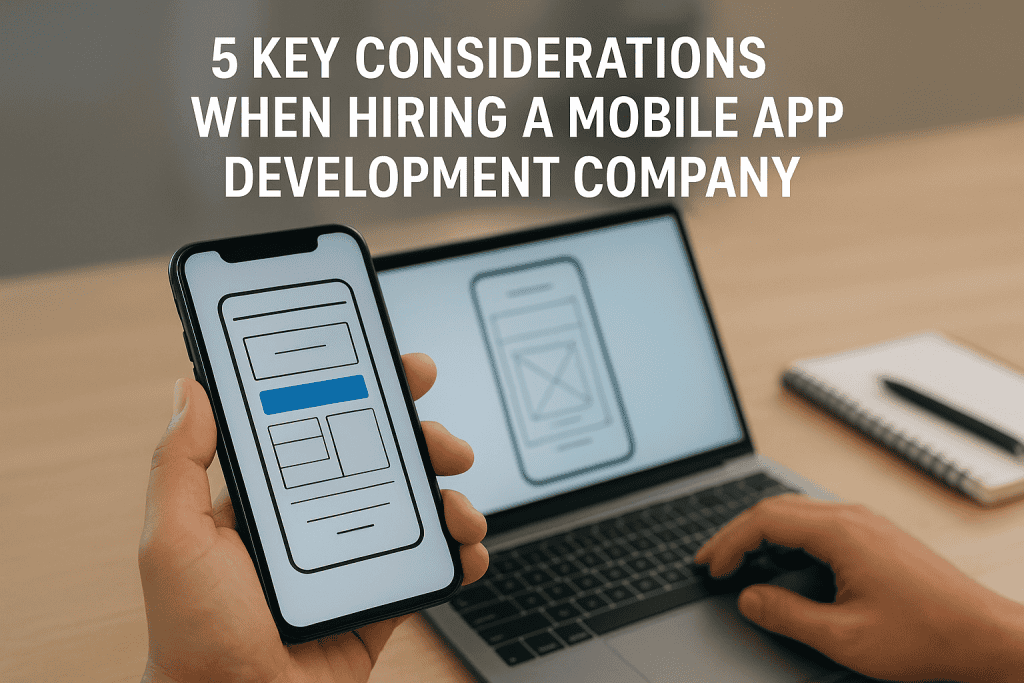
Choosing the correct mobile app development company can leave a lasting impact on your product’s journey. Teams that evaluate a mobile app development company must audit speed, quality, and cost while protecting the IP. Three key features exemplify the ideal vendor profile: domain expertise, a repeatable delivery process, and transparent communication. When selecting the right mobile app development company, opt for a company that can commit to a partnership that grows with you.
1- Portfolio Depth and Domain Fit
You can explore measurable outcome-based resources such as live apps and code samples in markets similar to yours. If the option you’re considering has a strong portfolio (edge cases, analytics, accessibility, and app store policies), then that can yield a great partnership. Choose firms that understand your sector’s workflows and regulatory context. This should be done regardless of whether you are in healthcare, fintech, retail, or field services. Domain fluency reduces discovery time, exposes risks faster, and enhances product decisions along the roadmap-to-release continuum.
2- Delivery Process and Team Model
Great outcomes come from clear processes. Check how discovery, design, development, and testing are done for every project. Understand the ownership of product management, design, engineering, and QA, and how they change over time as the app evolves. Clarify the scope of mobile app development services to align expectations with capacity. Ask how the company deals with spikes, vacations, and knowledge transfer. Ask to provide a sample sprint plan with story estimates, acceptance criteria, and demo cadence.
3- Communication and Time Zone Alignment
Even the best architecture fails with poor communication. Expect a named delivery lead, weekly demos, and a shared channel for blockers. Agree to response-time targets and escalation paths. Align on meeting times across time zones, especially if backend, frontend, and design sit in different regions. Require transparent project tracking: velocity, burndown, defect rates, and release readiness. Strong communication habits make remote collaboration feel local.
4- Security, Compliance, and IP Protection
Your application is in contact with customer data and frequent payments. Secure coding standards, dependency scanning, and frequent penetration testing. Obtain PII, HIPAA, PCI, or SOC 2 policies as appropriate. Make sure that NDAs and work-for-hire clauses give you ownership of the source code, designs, and build scripts. Ask how data is stored, who has administrative access, and how secrets are handled. Security is not a box to tick, but rather a product feature.
5- Pricing, Contracts, and Outcomes
Price models vary: fixed bid suits a tight scope, time-and-materials fits evolving products, and dedicated teams offer stable velocity. Insist on transparency: rate cards, change-control rules, and a budget burn chart you can inspect weekly. Tie payments to outcomes such as passing acceptance criteria, not hours alone. Avoid lock-in by requiring documentation, test coverage targets, and CI/CD handover. Plan for post-launch support: analytics tuning, crash triage, performance work, and roadmap grooming.
How to Run a Low-Risk Pilot
Start small to learn fast. Define one or two high-impact features and a crisp success metric like time-to-first-value or retention after week one. Give the team access to real users for feedback loops and usability testing. Keep meetings short and focused; let a product manager translate business goals into stories and a designer validate flows. After the pilot, decide to scale, pivot, or sunset based on evidence, not hope.
Conclusion
Selecting the right partner is a strategic decision, not a procurement checkbox. By rigorously evaluating portfolio strength, delivery practices, communication discipline, security posture, and commercial terms, you reduce risk and increase the odds of shipping a mobile app that customers love. Choose a firm that listens, measures, and iterates; then hold both sides accountable to outcomes, not activity. That’s how you turn an idea into a durable product. Invest in discovery, test early, and share ownership across the team.
